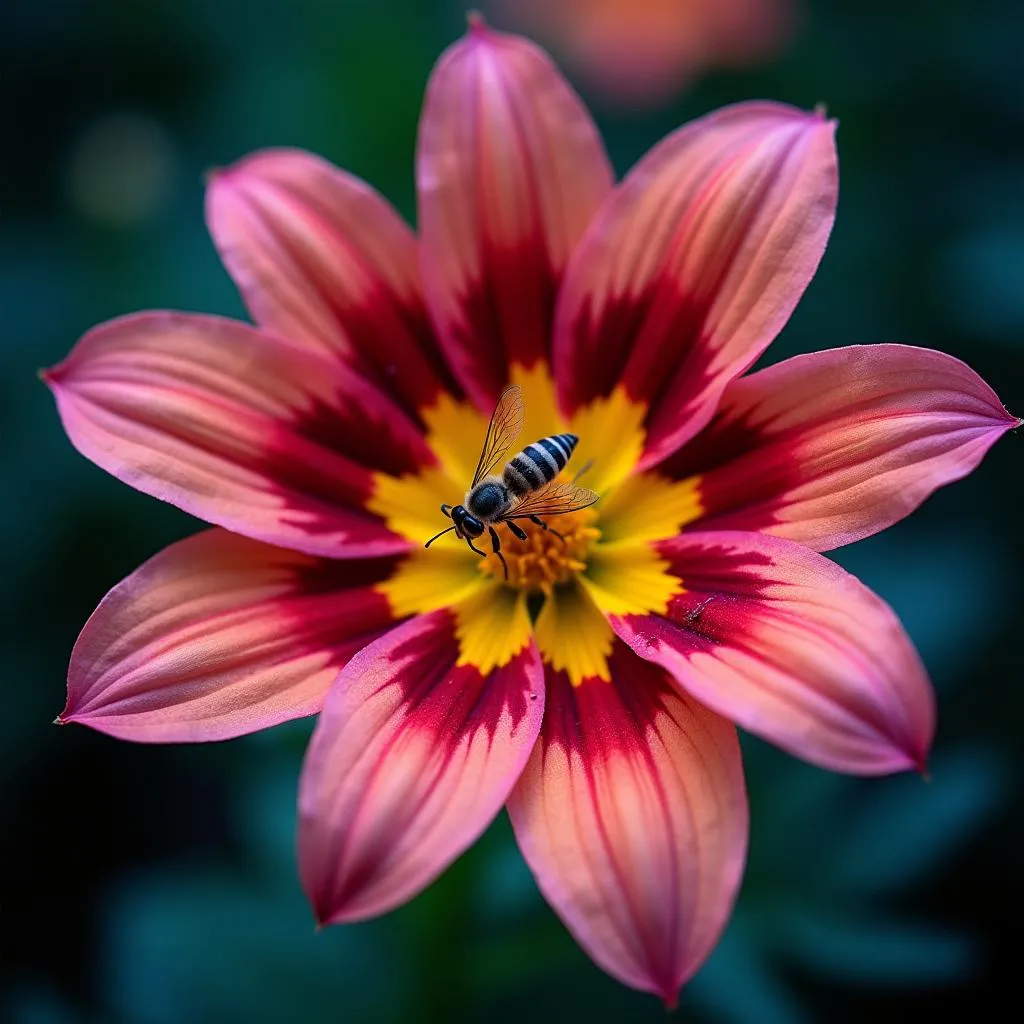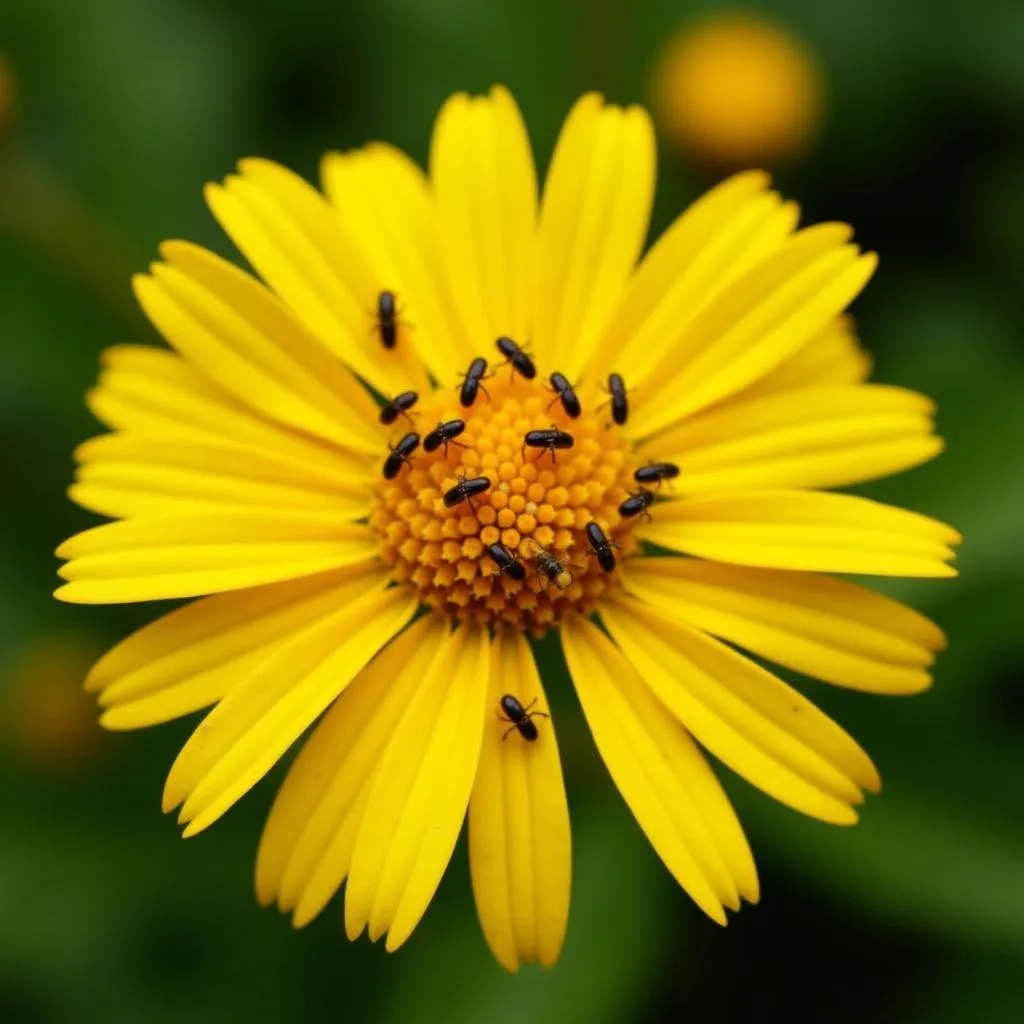We all love a splash of color in our lives, whether it’s a vibrant garden or a freshly painted house. But did you know that certain hues can be a magnet for unwanted guests like insects? It’s true! Insects perceive color differently than humans, and some shades act like beacons, drawing them in from afar. Let’s explore the fascinating science behind color and pest attraction, and learn how you can make informed choices to keep those pesky bugs at bay.
The Bug’s Eye View: Seeing the World Differently
Insects, unlike humans, see the world through a broader spectrum of light, including ultraviolet (UV) wavelengths. This expanded vision allows them to perceive colors and patterns invisible to the human eye. Flowers, for instance, often display intricate UV patterns that act as landing guides for pollinators like bees.
 Insects on Flower
Insects on Flower
While certain colors attract, others repel. For instance, mosquitoes, notorious for their attraction to darker hues, find refuge in shadows and dark corners.
Unmasking the Color Culprits: Which Shades Attract Bugs?
Understanding which colors attract bugs can help you make smart choices for your home and garden. Here’s a closer look:
1. Bright Colors: A Bug’s Paradise
- Yellow: This cheerful hue acts like a bug magnet, especially for aphids, whiteflies, and fungus gnats.
- White: White reflects a significant amount of light, making it easily visible to insects, particularly moths and mosquitos.
 Yellow Flower with Insects
Yellow Flower with Insects
2. Warmer Tones: A Mixed Bag
- Orange and Pink: These vibrant colors can attract butterflies and other pollinators, but they can also attract aphids and certain types of beetles.
3. Cool Colors: A Calmer Palette
- Blue and Green: These calming shades are less attractive to most insects. However, some beetles and wasps are drawn to blue.
4. Dark Colors: A Mosquito Haven
- Black, Navy, and Dark Brown: Mosquitoes are particularly attracted to dark colors as they absorb more heat, creating a cozy environment.
Beyond Color: Other Factors Influencing Bug Attraction
- Scent: Fragrant flowers, sweet fruits, and even human sweat can lure insects.
- Light: Many insects, especially moths, are drawn to light sources.
- Moisture: Standing water is a breeding ground for mosquitoes.
 Mosquito on Dark Surface
Mosquito on Dark Surface
Tips for a Bug-Free Environment: Putting Knowledge into Action
- Strategic Planting: Opt for less bug-attracting colors in your garden or strategically place them away from seating areas.
- Lighting Choices: Use yellow bug lights or LED lights, which are less attractive to insects.
- Clothing Colors: When spending time outdoors, consider wearing lighter colors, especially during peak mosquito hours.
- Home Maintenance: Repair torn screens, seal cracks and crevices, and eliminate standing water to deter pests.
Conclusion: Making Informed Color Choices
Understanding the relationship between color and bug attraction empowers you to create a more pleasant and pest-free environment. By choosing colors wisely, maintaining your property, and implementing simple preventative measures, you can enjoy the beauty of your surroundings without the nuisance of unwanted insect visitors.

